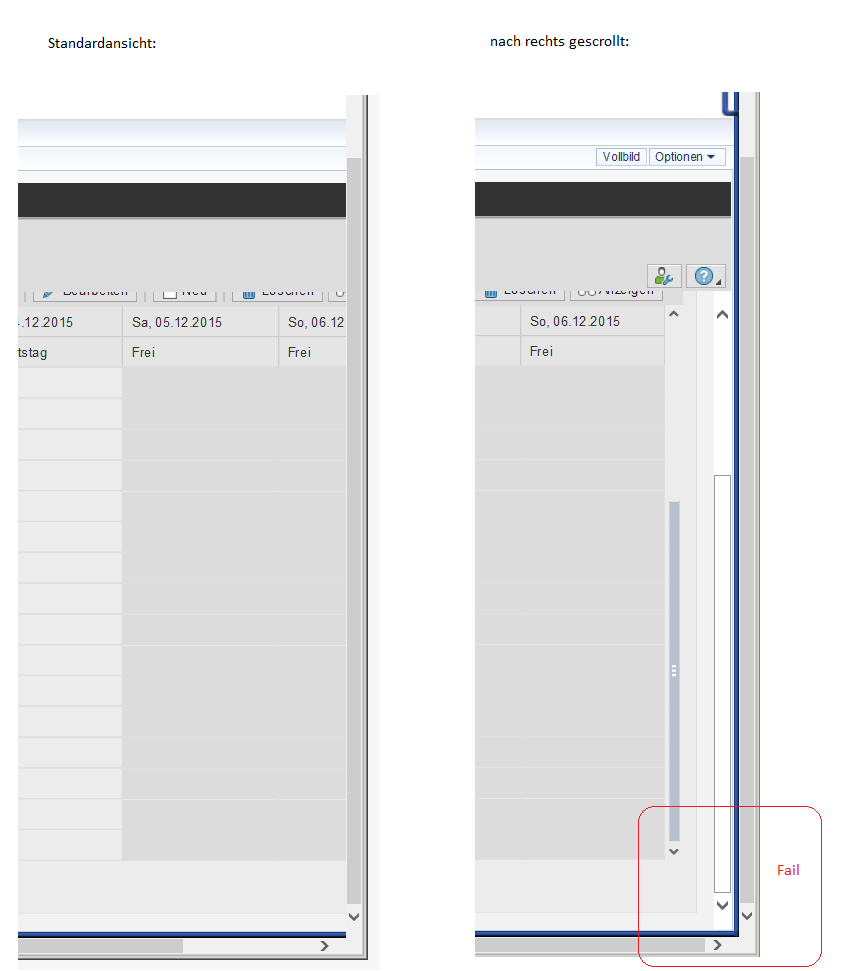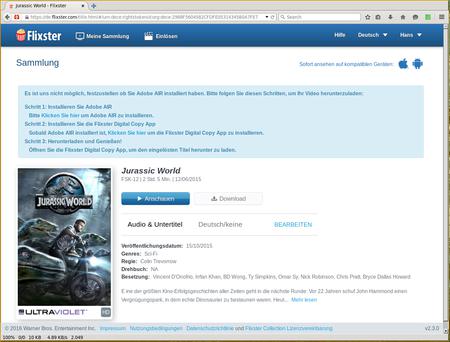Table of contents
Googles AMP - yet Another Morons Proxy
AMP will cure it all: the bloat, the ad-nonsense, slow web pages, or so they say. Simplified: AMP is just a javascript layer upon a web page which directs google to cache the page and which renders the page optimized for mobile clients. Yeah, that's right: nothing you couldn't achieve with HTML and Squid as well.
So, let's look at an example in the real world: The Guardian has already implemented AMP, which you can easily test by appending "/amp" to any guardian.co.uk uri. I'll take a deeper look at this one: More plastic than fish in the sea by 2050, says Ellen MacArthur.
The result is truly amazing: the page consists of 107 elements and loads even slower than its non-"amp"-lified counterpart. Here's how it looks in FF's inspector (the screenshot is incomplete). Wow!
Of course it would be really easy to make the web as fast as in "the old days": just leave out all the bloat. To show how this works, I re-made the above Guardian page: here's my old school amplified version. This version consists of only 5 elements (the HTML and 4 images), I left out the headlines on the bottom and the advertisements though. It renders way faster than the AMP version and is readable on any device (PC or mobile doesn't matter).
So, what is this AMP thing for?
In reality it just hooks up "publishers" (that is: companies making money by creating webpages containing ads which try to lure in viewers by also containing some "journalistic" content) so their content gets delivered through Google's networks. Google then knows more about the reading habits of people even if the advertisements on those "amplified" pages are not served by Google itself. And - of course - it makes it possible to further the surveillance of billions people all over the planet. I bet it'll take not that long til the first law enforcement officials demand access to Google's AMP logs.
And along the way this initiative is yet another blow against the open web.
Und da wundert Ihr Euch?!
Das hier bekomme ich angezeigt, wenn ich einen gekauften Film bei "Flixter" herunterladen will:
SAP. Der Horror.
Bei meinem Arbeitgeber wird - wie in vielen Firmen - SAP eingesetzt. Unter anderem für die Zeiterfassung. Neulich wurde ein neues "Tool" eingeführt. Es handelt sich dabei weniger um ein Zeiterfassungstool als eine webgewordene Exceltabelle mit allerlei Buttons und verschachtelten Menüs usw.
Davon abgesehen, dass das Teil jenseits von Gut und Böse ist, gibt es einen nennenswerten Bug: man ruft die Seite im Browser auf. Die Seite ist IMMER grösser als der Browser, d.h. auf meinem 28" Bildschirm gibt es im Browser Scrollbalken. Und zwar horizontal UND vertikal. Aber es wird noch besser: innerhalb der Seite ist die eigentliche UI in einem iFrame (mit Scrollbalken und fixer Grösse) und die eigentliche Tabelle mit den Zeiten befindet sich in einem WEITERN iFrame. Und auch der hat eine fixe Grösse.
Letztlich hat man dann 3 Scrollbars, die man verschieden bedienen muss, um zur passenden Stelle zu kommen, wobei die inneren Scrollbars erst sichtbar werden, wenn man nach rechts scrollt. Vorher scheint auf der rechten Seite einfach was zu fehlen. So sieht das dann aus:

Nun dachte ich mir als braver Softwareentwickler: mach doch einfach mal einen Bugreport auf. Gesagt getan. Hier die erste Antwort auf meinen Bug:
Hallo, danke für das Feedback. Ihre Vorschläge in Ehren, allerdings müssten wir diese an die SAP geben, da wir hier einen SAP Standard verwenden. Sorry aber die Software ist nun mal so und es gibt Schlechtere. Sie gewöhnen sich bestimmt daran.
Mit diesem Text wurde der Bug geschlossen. Uff. Also habe ich den Bug wieder geöffnet mit folgender Bitte:
Hallo, dann eröffnen Sie einen Case bei SAP. Man muss wirklich nicht jeden Unsinn als gottgegeben hinnehmen. Danke.
Tage später wurde der Bug dann erneut geschlossen und zwar mit folgender Meldung:
leider besteht derzeitig keine Möglichleit Änderungen am Design vorzunehmen.
Das wars.
Wenn ich mit den Bugreports, die ich für meine Software reinkriege, so umgehen würde, die Leute würden mich lynchen. Wirklich unfassbar. Unfähig, vernünftige Software zu entwickeln (und seien wir ehrlich: das ist noch nicht mal Softwareentwicklung, es handelt sich ja nur um HTML, CSS und evtl. ein bischen JS, das Tool selber ist fertig und kommt von SAP) und sich dann so aufzuführen.
Natürlich kann ich nicht beurteilen, ob die Inkompetenz hier bei SAP liegt oder eher bei den SAP-Kollegen hier im Büro. Allerdings habe ich bisher noch nie eine SAP-Gui für irgendwas gesehen, die ergonomisch oder gar sinnvoll gewesen wäre. Ich tendiere daher eher zu SAP, einem Unternehmen das mit so einem Spruch hier wirbt:
As the market leader in enterprise application software, SAP is at the center of today's business and technology revolution. Our innovations enable more than 291,000 customers worldwide to work together more efficiently and use business insight more effectively.
My ass!
Schande!
Neulich lag beim Bäcker die SHZ aus. Ich hab sie gekauft, warum auch immer. Schlagzeile dort: Übergriffe auf Frauen: Die Nacht der Schande und ihre Folgen. Überhaupt berichten eine Menge Medien über die Ereignisse in Köln als Schande.
An dieser Wortwahl wird vor allem eines überdeutlich sichtbar: wie frauenfeindlich die "deutsche Öffentlichkeit" nach wie vor ist, also genau das, was derzeit vor allem Nordafrikanern und Arabern vorgeworfen wird. Denn eigentlich meint "Schande" im Zusammenhang mit der Vergewaltigung einer Frau, dass diese nun eine Schande für ihre Familie/Dorf/Sippe sei, daher anders bezeichnet als Schändung.
Man kann das Wort natürlich auch in einem anderen Kontext verwenden: nämlich dass die aktuelle Berichterstattung eine Schande ist.
Update 2016-01-15:
Mely Kiyak:Es wird dieser Tage viel diskutiert über die Frauenverachtung. Ganz besonders laut ist bei diesem Thema die Rechte. Gerade nationalkonservative Kreise setzen sich für den feministischen Kampf immer dann ein, wenn es darum geht, Frauenrechte im Kampf gegen Minderheitenrechte auszuspielen. Es geht dabei immer darum, "die Frau" vor "dem Ausländer, Moslem, Schwarzen oder Araber" zu beschützen. Im Kampf um die Frau vor dem eigenen Mitbürger oder Ehepartner macht die Rechte dann nicht mehr so eifrig mit.(wobei es in dem Artikel eigentlich um was anderes geht...)
Update 2016-01-13:
Passender Kommentar dazu vom Kietzneurotiker: Es geht dann mal los. Leider.↷ 11.01.2016 🠶 #gesellschaft ⤒
Chaum's Unfug
David Chaum and Co-Authors Javani, Kate, Krasnova, de Ruiter and Sherman have published a new paper called "cMix: Anonymization by High-Performance Scalable Mixing" proposing a new cryptographic mix protocol called "cMix" which he plans to implement with "Privategrity". The system aims to provide anonymity to users while also providing law enforcement the means to both identify users and decrypt their messages.
The relevant (prosa) section of the paper reads:
Independent from cMix, PrivaTegrity addresses potential abuse of anonymity services by establishing a trust model that offers a balance of anonymity and accountability. On the one hand, PrivaTegrity aims to provide privacy at a technical level that is not penetrable by nation states. On the other hand, PrivaTegrity aims to provide integrity, both prior restraint and accountability after the fact, that is inescapably tied to individuals. Only if all of the mixing nodes cooperate, can the senders and receivers of messages be linked or identified.
PrivaTegrity implements a new approach to user identification requiring each user to provide a small but different type of identifying information to each mix node. Some nodes may require photos or answers to personal history questions; others may request mobile phone numbers or email addresses. A user reveals comparatively little to any single node, but collectively the nodes possess significant identifying information. Each node can obligate itself contractually to trace and aggregate identifying information only according to a published policy, resulting in accountability and effective identification of users who violate the policy.
I'd say this scheme is Unfug:
- If some third party is able to identify an "anonymous" user, then the user is not anonymous. It doesn't count how much effort a third party would have to put into this. If it IS possible, it's not anonymous. Calling it as such is just a lie.
- If some third party is able to decrypt a message, then the system is not secure. Wether you operate nodes in nine different countries, 190 different countries or even 1 million different planets - if it IS possible, then it's not secure.
- Also something like "accountability" might score high on government wishlists, it has nothing to do with "anonymous communication". This newspeak is only introduced to justify the scheme.
- The whole concept ignores the problems with multiple jurisdictions. Something may be worth a warrant in one country but not in another. So it will be next to impossible to reach a consensus among all admins in most cases. Of course governments will catch this and demand a simple solution: operate all nodes in friendly jurisdictions (say: only in "five eyes countries").
- And, last but not least: how can a user know which node runs in which country? What if all nodes are operated by a state company in turkey? Or what if all nodes are running on the very same system?
So this scheme is nothing else as just another surveillance infrastructure, which is something no cryptographer shall ever propose.
Wired article. Hackernews Thread.
